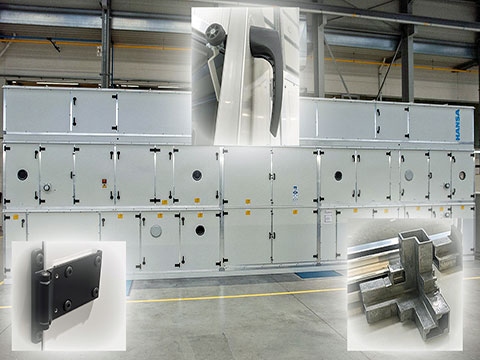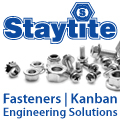
Posted to News on 30th Jun 2022, 08:42
HVACR OEM relies on Emka locking technology

When HVACR OEM Hansa Klimasysteme needed new connecting elements for the corners of its air-conditioning units to stabilise the housing cube, suitable for die-casting, it turned to Emka.
Hansa develops and produces air-conditioning and ventilation systems for schools, offices, sports halls, swimming pools, hospitals, industry and IT rooms. Except for a few standard units, Hansa specialises in customised production. Within limits allowed by the respective standards and directives, the company manufactures customised units according to the room ventilation requirements.
Furthermore, Hansa adapts the units’ design to the size of the building or the size of the ventilation centre. The aim is to achieve a perfect room climate with minimum energy consumption. The concept is based on a frame constructed of aluminium profiles and double-skin cladding elements made of galvanised and coated steel sheets with an intermediate insulation layer.
All system components must maintain either positive or negative pressure as required to regulate the temperature and air exchange in entire building complexes. The proper locking technology is an integral part of the enclosures to ensure the desired compression and easy and safe operation during maintenance. As a long-standing system partner of the air-conditioning industry, Emka locks comply with the special ventilation and air-conditioning systems requirements and fulfil the corresponding standards such as DIN EN 1886 or VDI 6022.
Hansa was able to switch to parts made of die-cast aluminium with various Emka fittings, ranging from hinges to levers on the operating doors. Hygienic sealing gaskets made of EPDM and silicone are also used in these units to seal them pressure-tight and to ensure the systems’ durability.
The latest joint project was the changeover from aluminium mould parts to die-cast aluminium parts. These components are used in the corners of air-conditioning units above a specific size as connecting elements between the aluminium profiles. The difference in production is that compared to gravity die casting, the metal is injected into the mould cavity under pressure in pressure die casting with consequent increase in quality and reduction in piece price for larger quantities.
“Since our instruments have had continuously higher sales, the quantities of these systems have increased accordingly,” explains Arno Bunger, production manager at Hansa. “From a certain number of units onwards, it is worth switching to die-casting. Even if the mould is more expensive, the components are ultimately much cheaper.”
Because every year, approximately 8,000 parts are used the joint project started at the end of 2019, focusing on the question: “How can we change the existing component to make it suitable for aluminium die casting?” Emka then created compliant engineering drawings and had the appropriate tools manufactured. The key demand for the aluminium die-cast parts was that above all, they must be stable and have an exact geometry. Moreover, the price had to be fundamentally reduced compared to mould production.





